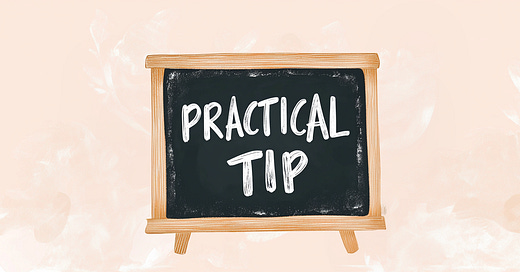I want the information I share to be truly useful—something you can apply to your daily life. Integrative and preventive medicine isn’t just about knowledge; it’s about small, practical changes that add up to lasting health.
Here’s how you can start today. ⬇️
Break free from misinformation with science-backed insights, practical health tips, the latest research, and expert myth-busting—all from a certified Medical Doctor. Join 3,000+ like-minded people now!
Freeze Your Fresh Herbs in Olive Oil
Preserve the flavor and health benefits of fresh herbs like basil, rosemary, or parsley while making your cooking faster and easier. Bonus? These herbs are packed with antioxidant and anti-inflammatory properties!
How to:
Finely chop your favorite fresh herbs.
Fill an ice cube tray with the herbs and cover them with olive oil.
Freeze, then transfer the cubes to an airtight container.
Storage time: Up to 6 months in the freezer.
Uses: Toss these cubes directly into sauces, soups, or stir-fries for a burst of flavor and health in seconds!
Anti-Inflammation
While turmeric is a well-known anti-inflammatory superfood, its star compound, curcumin, struggles with low bioavailability. But don’t worry—there’s a simple solution!
Boost absorption by combining turmeric with:
Black pepper
Healthy fats
Try this: A red lentil curry with coconut milk, coconut oil, and brown rice—a comforting, complete protein meal that fights inflammation.
How to Avoid Glucose Spikes (I)
My husband surprised me today with an almond cake I love. Since I practice intermittent fasting, here’s how I managed to enjoy it without guilt:
I started my day with a protein and matcha smoothie, followed by a lunch of a French-style omelette with anchovies and Parmesan, accompanied by a kale, pomegranate, and red onion salad dressed with extra virgin olive oil and umeboshi vinegar. After that meal, I allowed myself a small slice of this delicious treat. The key is balance!
Here are some practical tips to help you enjoy your favorite (and occasional) treats without causing glucose spikes:
Adding lemon or vinegar to your meals.
Mix with proteins, fats, and other carbohydrates. A study showed that even combining different sources of carbohydrates can reduce the impact on blood glucose levels. When comparing 50 grams of carbohydrates from white rice to the same amount from a mix of fruit (pear, apple, or orange) and rice, the mixed combination resulted in a lower glycemic response.
Another tip I discovered while researching for my book, Delicious Longevity: Practical, Science-Based Guide to Holistic Wellness and Lasting Health through Nutrition—one I’d never heard of before, backed by a Randomized Controlled Trial published in the Diabetes Care journal.
Let Garlic Rest for 10 Minutes
Garlic is an easily accessible superfood, and there’s a simple trick to maximize its benefits.
Crush or chop garlic and let it rest for at least 10 minutes before cooking. This time allows the enzyme alliinase to convert alliin into allicin, the compound responsible for garlic’s potent antioxidant and anti-inflammatory effects.
Since heat destroys some allicin, it’s best to avoid cooking it at high temperatures.
Collagen Shots
Collagen is your body’s glue and most abundant protein: It supports youthful skin, strong bones, and flexible joints. But after age 25, collagen production declines, leading to aging signs like reduced skin elasticity and weaker connective tissues.
Natural boost: Bone broth is a collagen powerhouse, extracted from animal bones and connective tissues.
Difficult to incorporate it into your daily routine? Take a small "shot" of bone broth before meals. It’s easy and quick!




